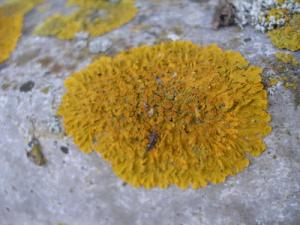Science
Cassini Shows Why Jet Streams Cross-Cut Saturn

Scientists studying images from NASA's Cassini spacecraft have found that heat from within the planet powers the jet streams.
- Read more
- 668 reads
The toughest life on Earth

Lichen is an example that was exposed to space conditions on the International Space Station for 18 months. Some lichens survived the ordeal and continued to grow in the laboratory. Several trays filled with organisms were installed on the outside of the European Columbus laboratory.
- Read more
- 673 reads
Astronomers Discover Planetary Odd Couple

Planetrise: An artist's conception shows Kepler-36c as it might look from the surface of neighboring Kepler-36b.
- Read more
- 494 reads
NASA Spacecraft Reveals Ice Content in Moon Crater

NLSI scientists have mapped Shackleton crater with unprecedented detail, finding possible evidence for small amounts of ice on the crater’s floor. Using a laser altimeter on the Lunar Reconnaissance Orbiter (LRO) spacecraft, the team essentially illuminated the crater’s interior with laser light, measuring its albedo, or natural reflectance. The scientists found that the crater’s floor is in fact brighter than that of other nearby craters — an observation consistent with the presence of ice, which the team calculates may make up 22 percent of the material within a micron-thick layer on the crater’s floor.
- Read more
- 500 reads
Computer Graphics Group Selects NASA Earth Visuals for Showcase

An annual conference that presents and publishes the best in computer graphics and technical research chose a NASA excerpt as one of its select entries of 2012.
- Read more
- 509 reads
Most Quasars Live on Snacks, Not Large Meals

Black holes in the early universe needed a few snacks rather than one giant meal to fuel their quasars and help them grow, a new study shows.
- Read more
- 445 reads
Study Finds Ancient Warming Greened Antarctica
A new university-led study with NASA participation finds ancient Antarctica was much warmer and wetter than previously suspected. The climate was suitable to support substantial vegetation -- including stunted trees -- along the edges of the frozen continent.
- Read more
- 506 reads
Compact Blue Dwarf Can’t Hide from Hubble

The NASA/ESA Hubble Space Telescope has captured this view of the dwarf galaxy UGC 5497, which looks a bit like salt sprinkled on black velvet in this image.
- Read more
- 520 reads
NASA Releases Workshop Data and Findings on Asteroid 2011 AG5

Researchers anticipate that asteroid 2011 AG5, discovered in January 2011, will fly safely past and not impact Earth in 2040.
- Read more
- 420 reads
Human Rights
Fostering a More Humane World: The 28th Eurasian Economic Summi

Conscience, Hope, and Action: Keys to Global Peace and Sustainability

Ringing FOWPAL’s Peace Bell for the World:Nobel Peace Prize Laureates’ Visions and Actions

Protecting the World’s Cultural Diversity for a Sustainable Future

Puppet Show I International Friendship Day 2020


